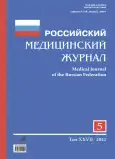Inhumane medicine: imperial japan’s development and the use of biological weapons during World War II
- 作者: Damulin I.V.1, Strutzenko A.A.2
-
隶属关系:
- Moscow Research Institute of Psychiatry – a branch of V.P. Serbsky National Medical Research Centre for Psychiatry and Addiction Psychiatry
- Peoples’ Friendship University of Russia (RUDN University)
- 期: 卷 27, 编号 5 (2021)
- 页面: 517-526
- 栏目: Reviews
- URL: https://journals.rcsi.science/0869-2106/article/view/108930
- DOI: https://doi.org/10.17816/0869-2106-2021-27-5-517-526
- ID: 108930
如何引用文章
详细
There is currently an acute lack of information on the activities of Japanese doctors during World War II. Being a country with limited natural, financial, and human resources, Imperial Japan considered biological and chemical weapons one of the most promising and effective means of warfare in its quest to dominate Southeast Asia. In the mid 1920s, the Japanese leadership approved biological and chemical warfare research. The implementation of the biological weapons project, including human testing, was entrusted to Shiro Ishii and a group of Japanese scientists under his leadership, as well as to military and civilian experts. These studies examined the effectiveness of plague, gas gangrene, cholera, anthrax, and other pathogens. Experiments, including detailed descriptions of the subjects’ suffering and the results of autopsies/vivisections, were carefully documented. Field tests involved the distribution of contaminated food and crops to the Chinese population, as well as the contamination of water supplies. Similarly, in keeping with military interests, the effectiveness of munitions and the effects of decompression, hypothermia, and electric current were investigated on prisoners. After the end of World War II and the surrender of Imperial Japan, large-scale buried victims of experiments were found on the territory of the People’s Republic of China, including the borders of the USSR. The paper focuses on the ethical component of the studies conducted, based on the dominant view in the Japanese society that all actions for the glory of the country and the emperor are justified and the absence of any ethical considerations due to the prejudice of the Japanese against foreigners in general and the Chinese in particular.
作者简介
Igor’ Damulin
Moscow Research Institute of Psychiatry – a branch of V.P. Serbsky National Medical Research Centre for Psychiatry and Addiction Psychiatry
编辑信件的主要联系方式.
Email: damulin_igor@mail.ru
ORCID iD: 0000-0003-4826-5537
MD, Dr. Sci. (Med.), Professor
俄罗斯联邦, 3, b.10, Poteshnaya str., Moscow, 107076Alla Strutzenko
Peoples’ Friendship University of Russia (RUDN University)
Email: mapachemedico@gmail.com
ORCID iD: 0000-0002-9758-8087
MD, Cand. Sci. (Med.), assistant professor
俄罗斯联邦, Moscow参考
- Powell JW. Japan’s germ warfare: The U.S. cover-up of a war crime. Bulletin of Concerned Asian Scholars. 2019;12(4):2–17. doi: 10.1080/14672715.1980.10405225
- Harris S. Japanese biological warfare experiments and other atrocities in Manchuria, 1932?1945, and the subsequent United States cover up: a preliminary assessment. Crime, Law and Social Change. 1991;15(3): 171–199. doi: 10.1007/bf00196721
- Toshiya I. Japanese War Crimes and War Crimes Trials in China. In: Genocide and Mass Violence in Asia. Ch.8. GmbH: De Gruyter Oldenbourg; 2019. P:141–159. doi: 10.1515/9783110659054-008
- Harris SH. Factories of Death. Japanese biological warfare 1932–45 and the American cover-up. London, New York: Routledge-Taylor & Francis Group; 1995. doi: 10.4324/noe0415132060
- Watts J. Japan taken to court over germ-warfare allegations. Lancet. 1998;351(9103):657. doi: 10.1016/S0140-6736(05)78451-8
- Crowe DM. War Crimes, Genocide, and Justice. A Global History. New York: Palgrave Macmillan; 2014. doi: 10.1057/9781137037015
- Perper JA, Cina SJ. When Doctors Kill. Who, Why, and How. New York: Springer Science+Business Media; 2010. doi: 10.1007/978-1-4419-1369-2
- Harris S. Japanese biological warfare research on humans: a case study of microbiology and ethics. Ann N Y Acad Sci. 1992;666:21-52. doi: 10.1111/j.1749-6632.1992.tb38021.x
- Ruoff KL. Biological warfare. Clinical Microbiology Newsletter. 1998;20(21):173–176. doi: 10.1016/s0196-4399(00)88655-9
- Christopher GW. Biological warfare. A historical perspective. JAMA: The Journal of the American Medical Association. 1997;278(5):412–417. doi: 10.1001/jama.278.5.412
- Poupard JA, Miller LA. History of biological warfare: catapults to capsomeres. Ann N Y Acad Sci. 1992;666:9–20. doi: 10.1111/j.1749-6632.1992.tb38020.x
- Chen YF. Japanese death factories and the American cover-up. Camb Q Healthc Ethics. 1997;6(2):240–242. doi: 10.1017/s0963180100007866
- McFarland SL. Preparing for what never came: Chemical and biological warfare in World War II. Defense Analysis. 1986;2(2):107–121. doi: 10.1080/07430178608405241
补充文件






